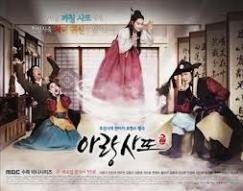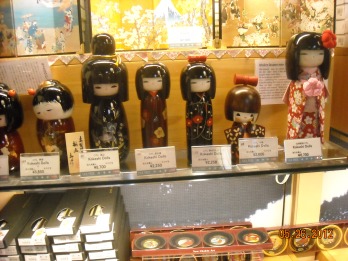Ever since I was little, my mom and/or my mom’s friends made Korean pancakes for me, themselves, and my family. They (somewhat) take the shape of regular pancakes, but Korean pancakes are quite different from the normal pancakes most people are used to.
Korean pancakes or 전/jeon are made from a variety of ingredients like vegetables, meat, seafood, poultry, basically anything you want. Korean pancakes can be eaten as 간식/snacks, 반찬/side dishes, 안주/appetizers served with alcohol , or as 식사/meals.
The common Korean pancakes my family usually eats is 야채전/yachaejeon or Korean vegetable pancakes. For all of you adventurous eaters, cooks, and/or Korean food lovers (or food lovers in general), here’s a homemade recipe (with some pictures):
Korean Vegetable Pancake Recipe/야채전Ingredients:
Onions
Green Onions
Mushrooms
*2 eggs
*2 Cups Flour
*1 ½ Cups Water
**Beef Flavor Seasoning
Salt and Pepper
1 Large Bowl
Pan
Vegetable Oil
**Soy Sauce
*Add ingredient accordingly
**Optional
You can basically add any vegetables you want-onions, green onions, carrots, mushrooms, squash, zucchini.
Gather all the desired vegetables, wash them, and chopped them up until small (you don’t want large chunks).
Once you washed and chopped all the vegetables, put the vegetable in the large bowl.
Next, pour the flour in the bowl. (The amount of flour depends on how much vegetable is in the bowl. The more vegetables, the more flour (approximately 2 cups). The less vegetables, the less flour (1/2-1 1/2 cup)
Then, add water. (When adding water, you want the mixture to be a little bit runny. You don’t want too little water and you don’t want the mixture to be really runny. Measure accordingly. Try ½ cup at a time).
Stir the mixture together, and then add eggs. For the eggs, you can add 1 or 2 eggs (2 eggs is better if you have a large mixture and 1 for a small mixture).
Add seasonings (if desired)
Stir together, and heat the oven to medium-high to high.
Pour a little bit of vegetable oil on the pan and make sure it’s spread on the pan before cooking.
Pour mixture in the pan; flip when the bottom of the pancake is a golden-brownish color.
Adjust temperature accordingly and pay close attention-you don’t want it to burn!
Once the other side is golden brown, remove the pancake from the pan.
(*Note-It’s suppose to be circular shape like regular pancakes, but as you can see -I already ate part of it…ㅋㅋ)
Pour a little bit of vegetable oil again, and start the whole process all over again!
*Makes a few large pancakes or many small pancakes.
Now you have yourself Korean vegetable pancakes. Enjoy and try dipping it in soy sauce (it makes the taste a lot better). Here’s a (simple) soy sauce recipe that my mom uses to give it an extra flavor:
Add a little bit of garlic, sesame oil, green onion, sugar, and pepper powder to the soy sauce. Now mix!
If you’re interested in the other types of Korean pancakes, read the list below:
파전/pajeon-green onion pancakes
킴치전/kimchi jeon-kimchi pancakes
두부전/dooboo jeon-tofu pancakes
고추전/go choo jeon-chili pepper pancakes
호박전/ho bak jeon-squash/pumpkin pancakes
감자전/ gamja jeon-grated potato pancakes
새우전/sae-oo jeon-shrimp pancakes
굴전/gool jeon-oyster pancakes
대하전/daeha jeon-prawn pancakes
생선전/saengsun jeon-(any type of) fish pancakes
해물전/hae mool jeon-pancakes made of fish, shellfish, shrimp, and/or octopus
가지전/gaji jeon-eggplant pancakes
육전/yook jeon-grated meat pancakes
*This is just a condensed of the different Korean pancakes, you can see more at (or you can just google Korean pancake list)
http://en.wikipedia.org/wiki/Jeon_(food)
To make any of these, all you need to do is simply replace the vegetables for whatever the main ingredient(s) calls for.
Happy cooking!











